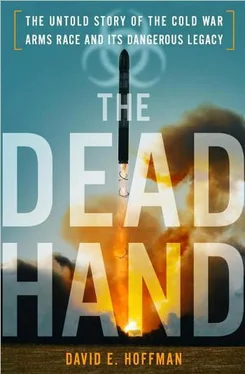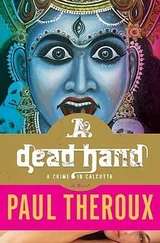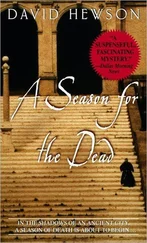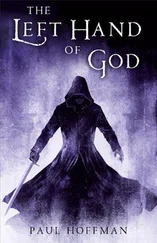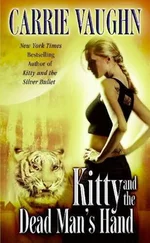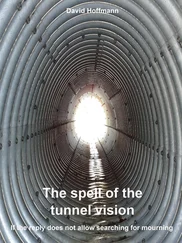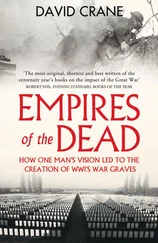Next, Nunn went to see Gorbachev in the Kremlin. They talked for about an hour. “I thought he looked shaken,” Nunn recalled. “Obviously, he had been through quite an experience. And we talked a good bit about what was going to happen to the Soviet Union. He was still saying it was going to stay together. He was still the president.” Nunn brought up the issue of command and control over nuclear weapons. In the back of his mind, he was worried about all the small, easily transportable tactical nuclear weapons that were spread among the republics. Gorbachev “tried to reassure me that the Soviet Union was going to remain intact, and that things were under control,” Nunn recalled.
As he was leaving, Nunn turned to Gorbachev. “Did you lose command and control while you were in captivity?” he asked.
Gorbachev would not answer the question. 1
Nunn grew up in a leading Methodist family in Perry, Georgia, population 11,000, in red dirt farm country. His father was a lawyer-farmer who was mayor of Perry when Nunn was born, and had served in the State Legislature and on the State Board of Education. After graduating from Emory University law school in 1962, Nunn went to Washington for a year, as a staff counsel on the House Armed Services Committee, returned to Georgia, served in the State Legislature and won a race for the U.S. Senate in 1972. Nunn had been mentored and influenced by powerful southern Democrats of an earlier generation, conservatives who were bulwarks of the military, among them Carl Vinson and John Stennis. 2In the Senate, Nunn was a moderate-conservative, wary of Soviet intentions; he voted for Reagan’s military buildup but was also an advocate for arms control agreements, especially to reduce the dangers of accidental nuclear war. Arms control, he once said, should “take the finger of both superpowers off the hair-trigger.” 3
What Nunn saw in Moscow after the coup brought back a personal memory from a Cold War flashpoint many years earlier. In 1974, when he had been in the Senate for only a year, Nunn toured NATO headquarters in Brussels and American military bases in Germany and Italy. 4If war were to come in Europe, the first battlefield would be divided Germany. Soviet war plans called for a massive sweep of sixty divisions from East Germany and Czechoslovakia into West Germany, reaching the German-French border within thirteen to fifteen days. 5They would face NATO’s tactical or battlefield nuclear weapons. American scientists and engineers had created tiny warheads that could fit into small missiles and artillery shells. The firepower of these miniature nukes was an alternative to using massive numbers of troops. The West had deployed seven thousand nuclear weapons in Europe during the period when Nunn visited. A substantial number of U.S. aircraft and missiles were on five-minute alert in case of a crisis.
At a U.S. tactical nuclear weapons base in Germany, where bunkers held warheads and shells, Nunn was shown the relatively small devices, including warheads that could be easily moved by one or two men. Nunn was reassured by the commanders that all the weapons were secure. As he left the building, a sergeant shook hands with him. In his hand, Nunn felt a piece of folded paper. He slipped it into his pocket.
“Senator Nunn,” it said, “please meet me and some of my guard buddies at the barracks around 6 tonight after work. I have very important information for you.”
That night, Nunn and his staff director, Frank Sullivan, went to the barracks. The sergeant and “three or four of his fellow sergeants related a horror story to me,” Nunn later recalled. “A story of a demoralized military after Vietnam. A story of drug abuse. A story of alcohol abuse. A story of U.S. soldiers actually guarding the tactical nuclear weapons while they were stoned on drugs. The stories went on and on for over an hour.” Nunn left “thoroughly shaken,” he said. 6
In Europe, Nunn also saw how easy it would be to stumble across the trip wire to nuclear war. In his report to the Senate, Nunn wrote, “There is a considerable danger that tactical nuclear weapons would be used at the very outset of a war, leading to possible, or even probable, escalation to strategic nuclear war.” Nunn recalled that NATO briefers had told him they would want nuclear weapons released “as soon as necessary,” but “as late as possible.” Nunn felt they didn’t put enough emphasis on as late as possible .
For many years, Nunn worried that the small, tactical nuclear weapons were even more fraught with danger than the huge intercontinental ballistic missiles. What if there was a minor skirmish over Berlin that got out of hand? “All of a sudden, bang, you’ve got a request on an American president’s desk to be able to use battlefield nuclear weapons,” Nunn said. “I was convinced nobody in the world had any idea what was going to happen after that started. You can sit around and read all the analytical stuff in the world, but once we start firing battlefield nuclear weapons, I don’t think anybody knew.” In the 1980s, Nunn added a new dimension to his concerns about accidental nuclear war. He realized the superpowers could be drawn into confrontation by gaps in the early-warning systems. A lone missile, perhaps from a third-country submarine, if mistaken for a first strike, could unleash a retaliatory onslaught before anyone would know how it began. Nunn asked the U.S. Strategic Air Command whether they could detect the origin of a submarine missile launch rapidly and accurately. After a top-secret study, they reported to Nunn that while the United States had a “fair” capability to pinpoint the origin, the Soviet Union’s warning systems were much worse. If the Soviets spotted a missile from, say, China, and thought it was really from the United States, a terrible miscalculation could follow. 7
Now, on a crowded street in Moscow in August 1991, all of Nunn’s experience, knowledge and fears about nuclear danger came together once again. Who would protect thousands of small atomic bombs spread all over the Soviet Union? What if the Soviet Union plunged into chaos and civil conflict? Who was responsible for command and control? What if the Russian military were as demoralized as the American soldiers had been after Vietnam? As he flew home, Nunn said, “I was convinced of two things. One, that there would be no more Soviet empire. And two, that they and we had a huge, huge security problem.”
Sitting on the deck of his family home at Walker’s Point, Maine, with a sweeping view of the Atlantic Ocean, Bush pondered the aftermath of the coup at the end of his summer holiday. In a morning press conference September 2, he said he would not “cut into the muscle of defense of this country” to provide aid to the faltering Soviet Union. At lunch, alone on the deck, writing in his diary, he recalled that on this day forty-seven years before, he had been shot down in the Pacific during World War II. So much had changed. Just that morning, he had recognized the independence of the Baltics.
In these days, Bush raised with Scowcroft the possibility of a sweeping new initiative to reduce the danger of nuclear war. 8For all his emphasis on prudence and his characteristic caution, Bush acted boldly. Within three weeks, he launched a significant pullback of U.S. nuclear weapons, both land and sea. He did it without drawn-out negotiations, without a treaty, without verification measures and without waiting for Soviet reciprocity. Raymond L. Garthoff, the historian, called it an arms race in reverse—and downhill. In a nationally televised address from the White House on September 27, Bush said, “The world has changed at a dramatic pace, with each day writing a fresh page of history before yesterday’s ink has even dried.” Bush announced the United States would eliminate all of its ground-launched battlefield or tactical nuclear weapons worldwide, and withdraw all those on ships; stand down the strategic bombers from high-alert status; take off hair-trigger alert 450 intercontinental ballistic missiles; and cancel several nuclear weapon modernization programs. 9The announcement meant a pullback of 1,300 artillery-fired atomic projectiles, 850 Lance missile nuclear warheads, and 500 naval weapons. In one stroke, Bush pulled back naval surface weapons that the United States had earlier refused to even discuss as part of strategic weapons negotiations.
Читать дальше
